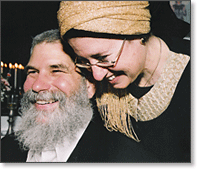These journeys are introduced by a verse that creates a mirror image: “And Moses
wrote their going forth according to their journeys at the command of God, and
these were their journeys according to their going forth” (Numbers 33:2). The
words “going forth” and “journeys” found in the first half of the verse occur in
the opposite order in the second half of the verse. The ArtScroll Chumash quotes
Rabbi Shimshon Raphael Hirsch on the significance of this inversion. The first
half of the verse – “Their going forth according to their journeys” – is written
from God’s perspective, as each time they went forth their journey had a
specific purpose, while the second half of the verse is written from the
people’s perspective. Since the people were often restless or dissatisfied, the
journey itself is emphasized and not its purpose. As the verse makes clear, the
journeys were more about leaving than about going anywhere – “their journeys
according to their going forth.”
This point although subtle is so true. Oftentimes we have the forethought to map
out our next moves in life in keeping with our long-term plans, with regard to a
broader vision of where we are going in life. Sometimes though we really do not
know what should come next but our intuition, at best, or our fears, at worst,
compel us to make a move without fully knowing what the ramifications of such a
move might be. The Sages actually suggest that in certain circumstances a change
of physical location actually provides us with such a new perspective on our
lives that it can either motivate us to change our fate, or, alternatively, that
it can cause our fate to be changed on a metaphysical level (Rosh Hashanah 16). Although following a
well thought out plan should be the ideal way to pursue what we believe is the
Divinely inspired purpose of our lives, in retrospect, even acting intuitively
or out of fear can also turn out to be, as the verse states, “at the command of
God.”
One
senses a dynamic pulsating energy in the summary of the journeys which is
dramatically captured by the unique way the words are chanted during the public
Torah reading. The only other time this unique melody is used is when the Song
of the Sea is read in public. There too the energy is palpable as the Jews have
just escaped from Egypt and
seen their pursuers drowned in the Reed Sea
Shabbat Shalom!
